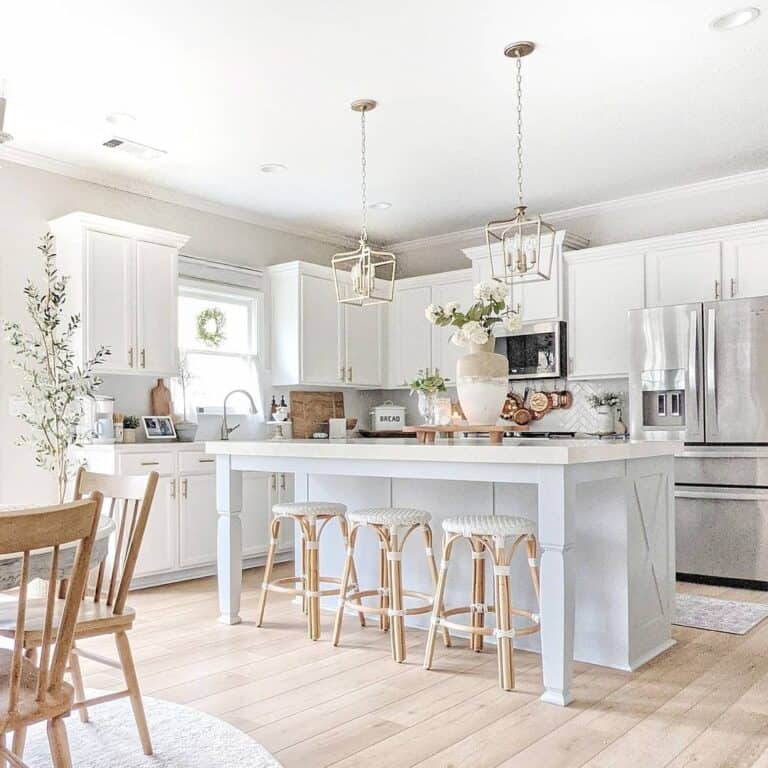Transform Any Kind Of Kitchen Space with Gorgeous Legs For Kitchen Island Selections
Transform Any Kind Of Kitchen Space with Gorgeous Legs For Kitchen Island Selections
Blog Article
Essential Factors to Consider When Choosing Legs For Cooking Area Island
Picking the proper legs for a cooking area island includes a careful evaluation of numerous variables that can substantially influence both capability and visual appeal. As we discover these components, it comes to be clear that each choice can have far-ranging effects for the general kitchen area experience.
Product Options
When picking legs for a kitchen island, comprehending the various product alternatives is essential for attaining both visual allure and architectural honesty (Legs For Kitchen Island). The selection of product significantly influences not only the longevity of the island but additionally its overall layout and functionality
Timber is a prominent selection, using warmth and adaptability. Solid woods, such as oak or maple, supply toughness and can be stained or repainted to match the kitchen area design. Metal legs, usually made from stainless steel or functioned iron, add a commercial and modern feeling while ensuring durability and stability. These products are immune to use and can sustain substantial weight, making them excellent for bigger islands.
An additional alternative is engineered materials, like MDF or plywood, which can be more cost-effective while still using a range of finishes. Nevertheless, they may not offer the same degree of security as solid timber or steel. Finally, products such as acrylic or glass can produce a contemporary appearance, though they may require additional support to make certain stability.
Inevitably, the choice of product for cooking area island legs must line up with the desired performance and the total style of the cooking area.
Design And Style

When taking into consideration design, the shape and surface of the legs are critical. Tapered legs can provide a feeling of lightness and beauty, while thicker, extra robust legs can communicate strength and security. Additionally, the coating-- be it painted, discolored, or all-natural-- must enhance the cabinets and counter top materials to develop a unified look.
In addition, the layout of the legs can also show personal taste. Customized or ornamental legs, such as those including complex makings or one-of-a-kind geometric shapes, can work as centerpieces, including character and personality to the kitchen area. Ultimately, the ideal choice will not only boost functionality but also elevate the visual allure, making the kitchen island a standout function of the home.
Elevation Considerations
Choosing the appropriate height for cooking area island legs is essential, as it straight affects both functionality and comfort. The common height for a kitchen island usually varies from 36 to 42 inches, aligning with typical countertop elevations. A 36-inch height is excellent for cooking and cooking, enabling comfortable use kitchen area devices and tools. On the other hand, an elevation of 42 inches is usually favored for islands planned for bar seats, accommodating taller stools and offering a laid-back eating experience.

It is also necessary to make up individuals' elevations and preferences. Customizing the elevation can make certain a comfy experience for all member of the family, making the cooking area island a more satisfying and practical space.
Weight Assistance
Making certain sufficient weight assistance for kitchen island legs is crucial for both safety and performance. The kitchen area island often serves several objectives, consisting of food prep work, eating, and extra storage space, demanding a durable my blog assistance framework. When picking legs, it is crucial to consider the total weight capacity needed based on the island's intended use and the materials that will certainly be put on it.
The choice of product for the legs plays a significant duty in their weight-bearing capacities. Strong timber, steel, and durable composites generally supply exceptional stamina contrasted to lighter materials. Furthermore, the design of the legs-- whether they are directly, tapered, or have a pedestal form-- can affect their capability to disperse weight successfully across the framework.
Constantly get in touch with the producer's specifications pertaining to tons restrictions to make sure that the legs can maintain the desired weight without compromising safety and security. In summary, selecting kitchen island legs with sufficient weight assistance is necessary for developing a useful and secure cooking space.
Installment and Maintenance
Correct setup and upkeep of cooking area island legs are vital for making certain durability and stability. This frequently entails safeguarding the legs to the island base utilizing appropriate fasteners, making certain that the legs are level and lined up.
As soon as installed, normal upkeep is necessary to maintain the stability and look of the legs - Legs For Kitchen Island. For wooden legs, routine cleaning with a damp towel and application of appropriate wood gloss can avoid wetness damages and maintain their finish. Metal legs might need a mild cleaning option to remove oil and crud, complied with by a dry towel to stop rust formation
In addition, inspect the legs on a regular basis for signs of wear or damage, such as splits or loose joints. Tightening up screws or bolts as needed can additionally extend the life expectancy of the legs. By adhering to these installment and upkeep practices, property owners can make sure that their cooking area island continues to be durable and aesthetically appealing for years ahead.
Final Thought

Visual comprehensibility is critical in choosing the design and layout of legs for a kitchen area island, as these components greatly influence the overall setting of the room. Tapered legs can provide a feeling of agility and beauty, while thicker, more browse around these guys durable legs can convey stamina and stability.Choosing the proper elevation for kitchen island legs is critical, as it straight impacts both functionality and convenience. In recap, selecting kitchen area island legs with adequate weight support is necessary for developing a safe and practical culinary space.
In verdict, picking legs for a kitchen island requires mindful consideration of different elements, including product alternatives, design, elevation, weight support, and installation.
Report this page